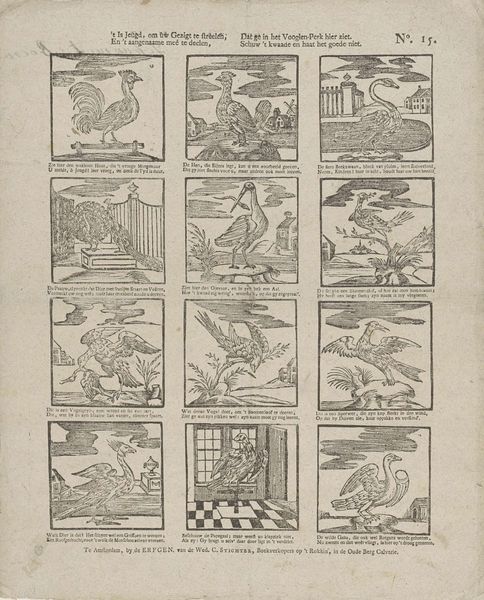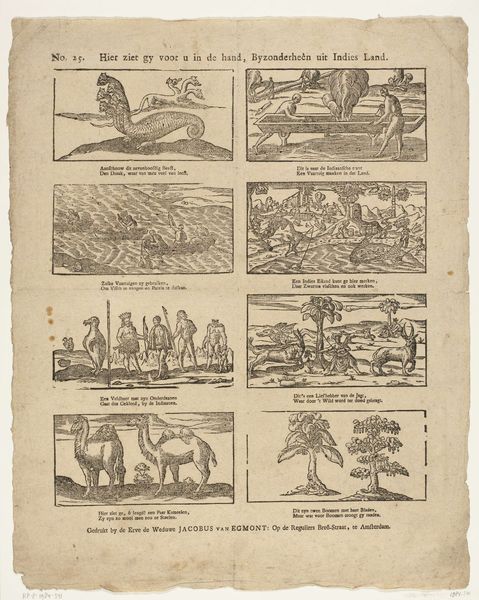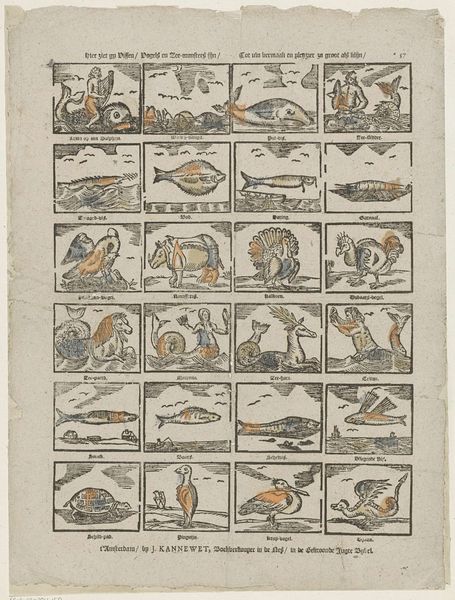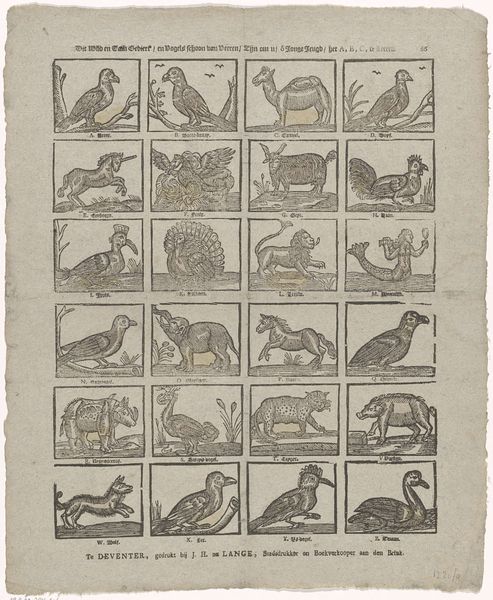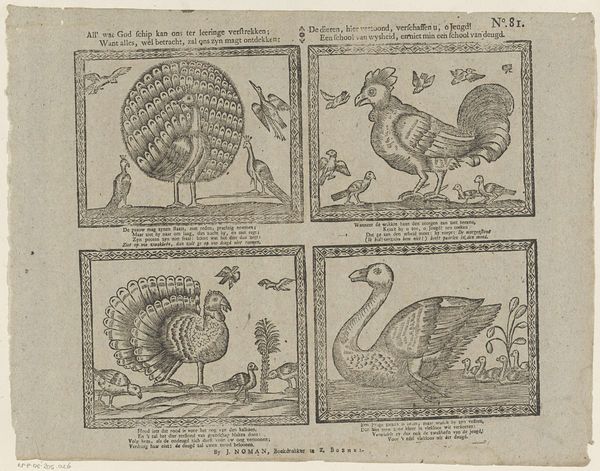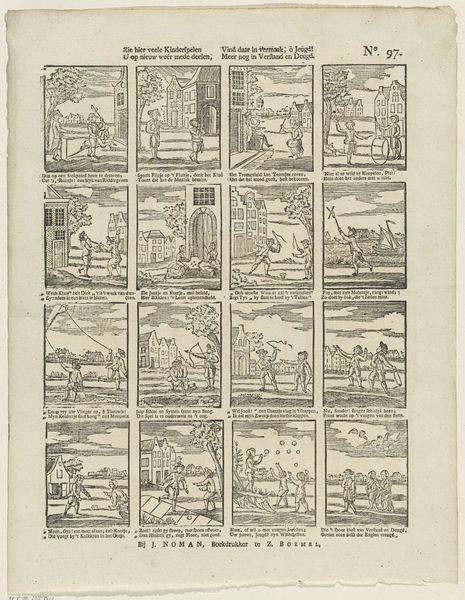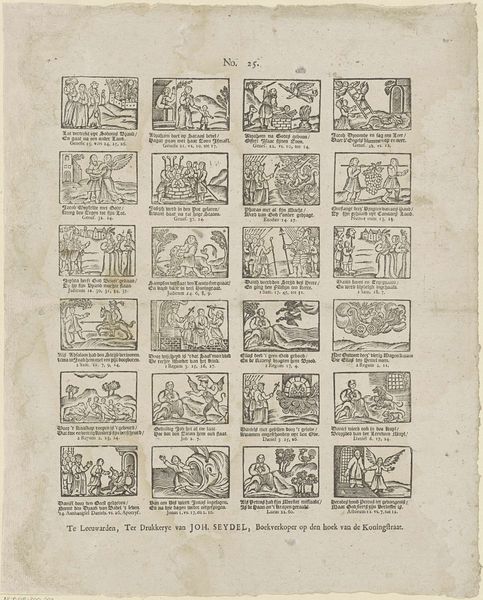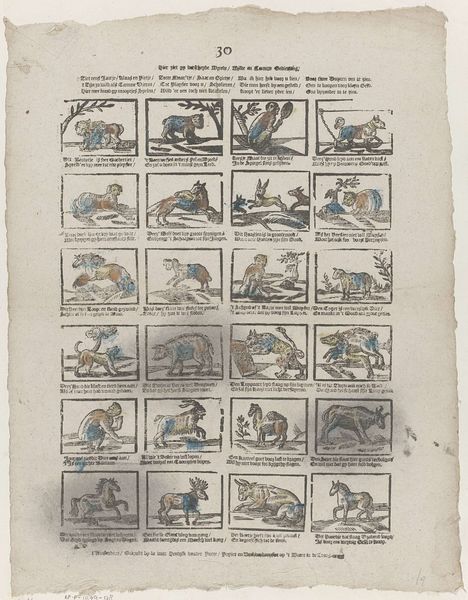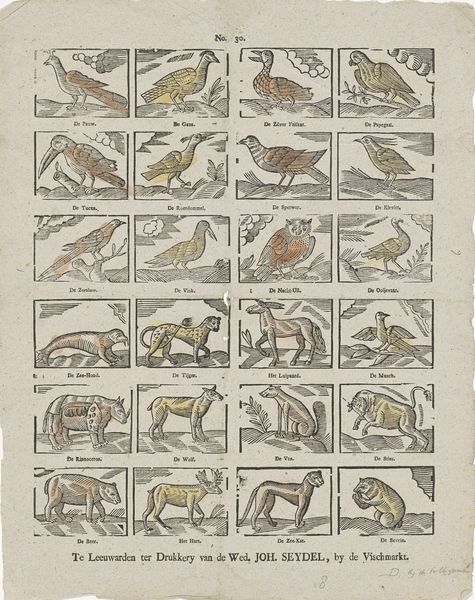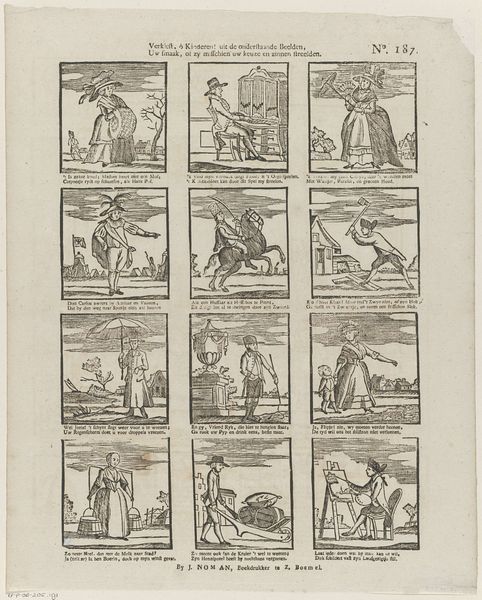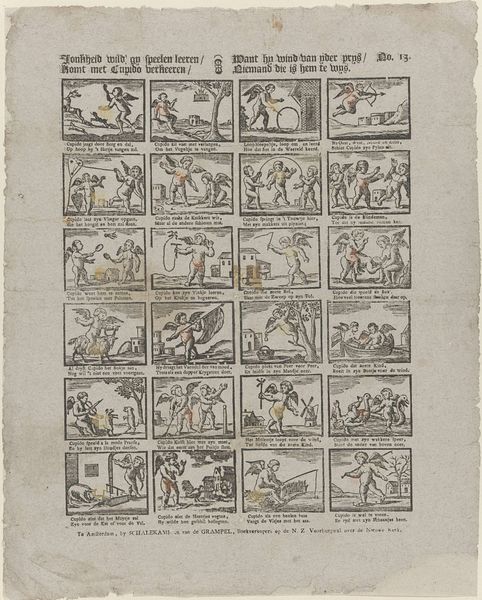
Kinders komt nu maar met hoopen / Om deez vogelen te koopen 1831 - 1854
0:00
0:00
ervehrynders
Rijksmuseum
drawing, print, paper, ink, engraving
#
drawing
#
comic strip sketch
#
quirky sketch
#
narrative-art
#
dutch-golden-age
# print
#
sketch book
#
bird
#
paper
#
personal sketchbook
#
ink
#
sketchwork
#
ink drawing experimentation
#
pen-ink sketch
#
sketchbook drawing
#
genre-painting
#
storyboard and sketchbook work
#
sketchbook art
#
engraving
Dimensions: height 413 mm, width 312 mm
Copyright: Rijks Museum: Open Domain
Editor: Today we're looking at "Kinders komt nu maar met hoopen / Om deez vogelen te koopen," a print from between 1831 and 1854 by Erve H. Rynders, housed here at the Rijksmuseum. It reminds me of a children’s book page. How do you interpret this work from a formalist perspective? Curator: Immediately striking is the grid structure. Note how Rynders contains each bird within its own clearly defined rectangular space, further emphasizing the artificiality and constructed nature of the composition. The deliberate, almost mechanical, arrangement draws attention to the relationships between these individual panels. Consider the use of line - primarily functional in defining the shapes of the birds, yet varying in weight to create a sense of depth. Editor: I see the differences in line weight, but I didn't really think about it! Does that influence your interpretation? Curator: It emphasizes certain forms over others. For instance, the heavier lines used to depict the outlines of the birds compared to the more delicate lines indicating background elements, brings forward these specific figures. What does this tell us? The deliberate flatness, a feature of printmaking of that time, does create a sense of stylization. Editor: So it's more about the construction of the images, less about what they mean? Curator: The semiotic interpretation does arise out of those artistic components: the linear quality, the grid... What do these components tell you? How might you decode them in our present time? Editor: That makes me think about how different elements build into the artwork, a totally new approach for me to analyzing art. Curator: Exactly. It’s through this understanding of structure that we begin to truly “see” a work of art.
Comments
No comments
Be the first to comment and join the conversation on the ultimate creative platform.
